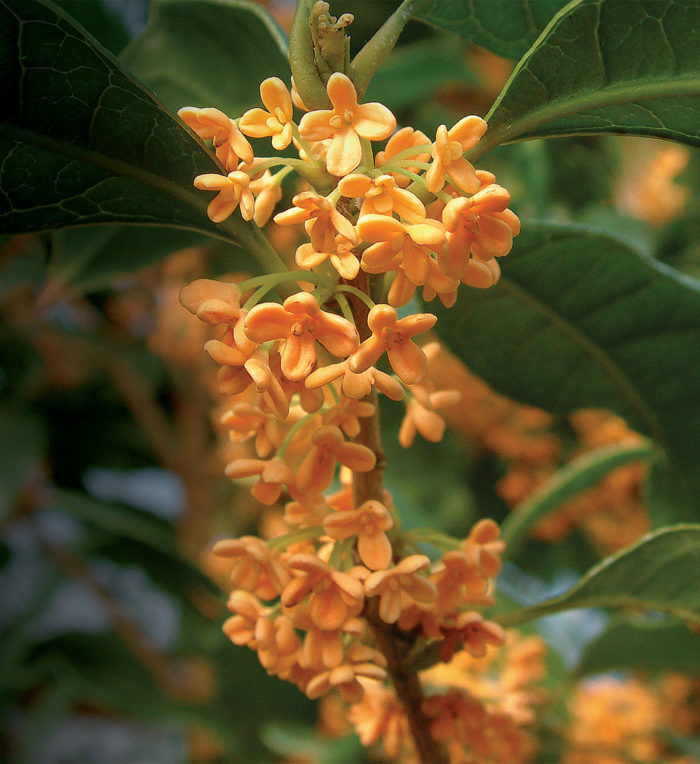
Fall is an exciting time in the garden, with cooler temperatures resulting in foliage taking on its characteristic yellow, orange, and red tones. Trees that flower in autumn, however, are often overlooked. Fall-flowering trees are a great addition to the landscape as they extend the flowering season at a time of year when flowering is not expected, thus providing a striking contrast to the stunning foliage.
1. Place this heavenly evergreen near an entryway
Name: Fragrant tea olive (Osmanthus fragrans f. aurantiacus and cvs.)
Zones: 7–9
Size: 10 to 20 feet tall and 8 to 12 feet wide
Conditions: Full sun to partial shade; average, moist, well-drained soil
Fragrant tea olive is a large broad-leaved evergreen that is best suited for the South because of its limited hardiness range. Although it resembles a holly, fragrant tea olive has 5-inch long leaves that are only slightly serrated. It begins flowering in September and continues through March, and although some of the flowering may be sporadic in winter, the fragrance is still impressive. In its youth, it is a multistemmed, broadly rounded shrub. Over time, as it gains height, the lower branches may be removed and the shrub limbed up into a small tree, which will eventually reach up to 20 feet tall. Situate fragrant tea olive in a garden near an entrance or in a courtyard, where its scent can be enjoyed. Interesting cultivars, such as ‘Apricot Gold’ and ‘Butter Yellow’, have been developed for form and flower color. The plant is deer resistant.
2. The quintessential southern plant in a slightly smaller version
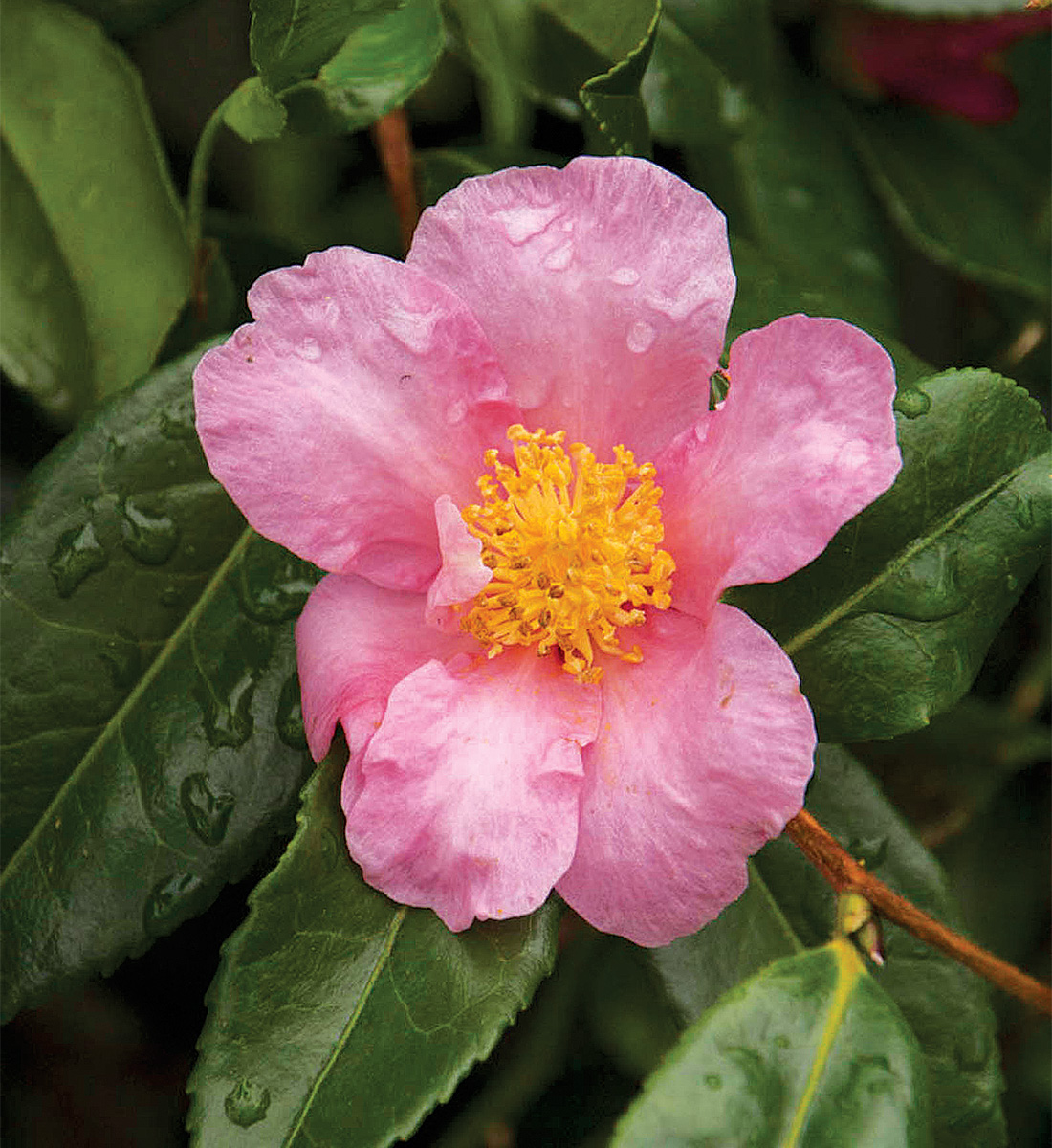
Name: Sasanqua camellia (Camellia sasanqua cvs.)
Zones: 7–9
Size: 6 to 15 feet tall and 6 to 10 feet wide
Conditions: Partial shade (under pine trees is ideal); acidic, fertile, moist, well-drained soil
In the South, Sasanqua camellia will bloom from September to December. It is slightly less hardy than common camellia (Camellia japonica, Zones 7–9) and tends to have a more diminutive habit. The flowers are also smaller and multi-petaled, and there are both single and double cultivars. Reaching up to 15 feet tall at maturity, this small tree or large shrub has a pyramidal habit and can be used for screening. It will thrive in dappled high shade—preferably under pine trees as it favors acidic soil—and can tolerate dry conditions. ‘Bonanza’ and ‘Midnight Lover’ are beautiful red selections. ‘Yuletide’ is also red but has yellow stamens. ‘Cleopatra’ and ‘Winter’s Star’ (pictured) are pink forms. ‘Swan Lake’ has white flowers. ‘Martha’s Dream’ has white flowers edged in pink.
3. Beautiful bark and fragrant flowers are worth the wait
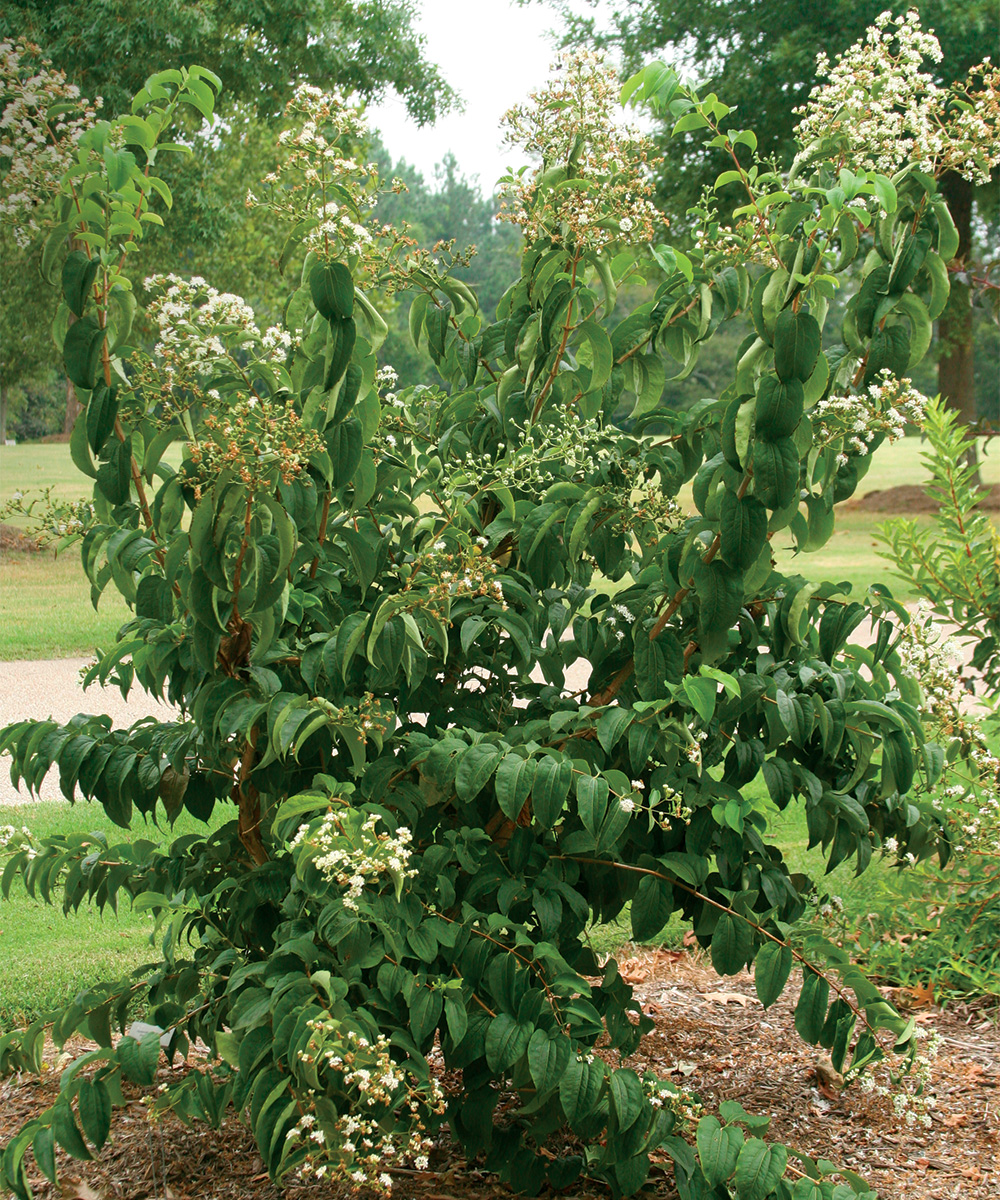
Name: Seven-son flower (Heptacodium miconioides)
Zones: 5–9
Size: 15 to 25 feet tall and 10 to 15 feet wide
Conditions: Full sun to partial shade; fertile, well-drained soil
We have been cultivating seven-son flower at the Scott Arboretum since the early 1990s. Today, seven-son flower is a broad, vase-shaped tree that is nearly 25 feet tall and spreads to 15 feet. This multistemmed tree has developed exquisite peeling bark in shades of gray and white. Over time, we have limbed up our tree to expose the bark. In late summer, the flowering panicles produce a profusion of tiny fragrant white flowers. As the flowers fade, the sepals at the base of the developing fruit turn pink and persist for up to two to three weeks. The effect of the sepals can be even more striking than the flowers. Native to China, seven-son flower has proven to be a tough plant in many parts of the United States. It tolerates difficult urban conditions and is deer resistant.
4. An elegant, underused native thought to be extinct
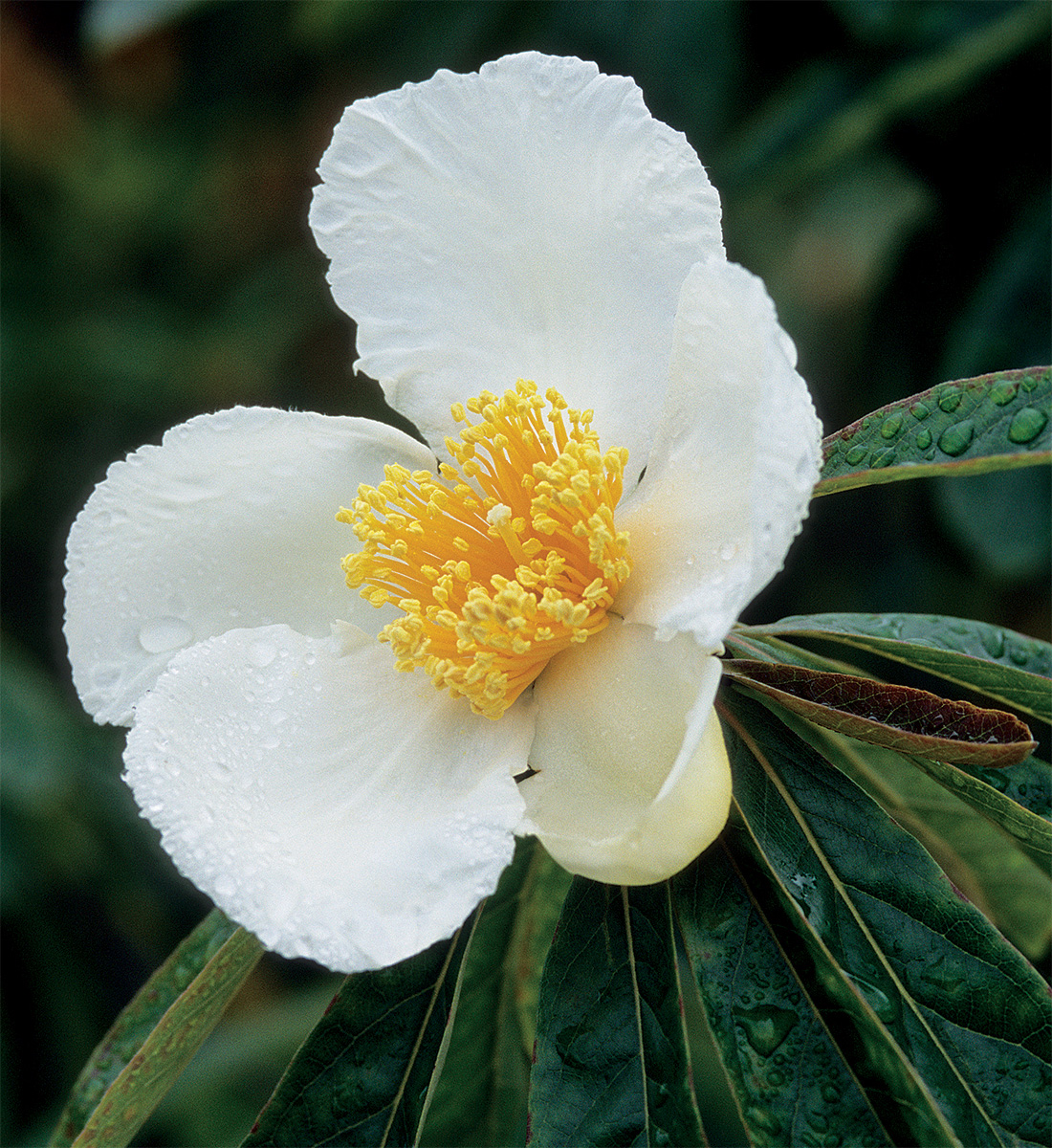
Name: Franklin tree (Franklinia alatamaha)
Zones: 6–9
Size: 10 to 20 feet tall and 6 to 15 feet wide
Conditions: Full sun; fertile, average, well-drained soil
The Franklin tree is highly underused in the landscape. Historically, it is an intriguing plant. Discovered by John Bartram in the 1800s along the Altamaha River in Georgia, this single-species tree is thought to be extinct in the wild and only available through cultivation. It can bloom as early as late July in the South but typically flowers in August in the Philadelphia area and even later into September and October in Massachusetts. While it can be grown as a single-trunked tree, it creates the best display when multistemmed. In late summer, the silky, round white buds form and soon open to flat-faced, 4- to 5-inch-wide flowers with a golden yellow center. This native attracts myriad butterfly species. In fall, the narrow leaves turn a brilliant fire-engine red. Over time, the smooth gray-brown stems will develop silvery striations that add to the ornament of this tree. Franklin tree can be somewhat fickle. It is best to plant a small containerized plant because it will not thrive when planted as a balled-and-burlapped specimen. It will also require supplemental watering in times of drought. In spite of its shortcomings, the late-summer and early-autumn camellia-like flowers, coupled with its fantastic fall color, make this deer-resistant plant highly coveted.
5. Elegant pink flowers soften the hot hues of fall
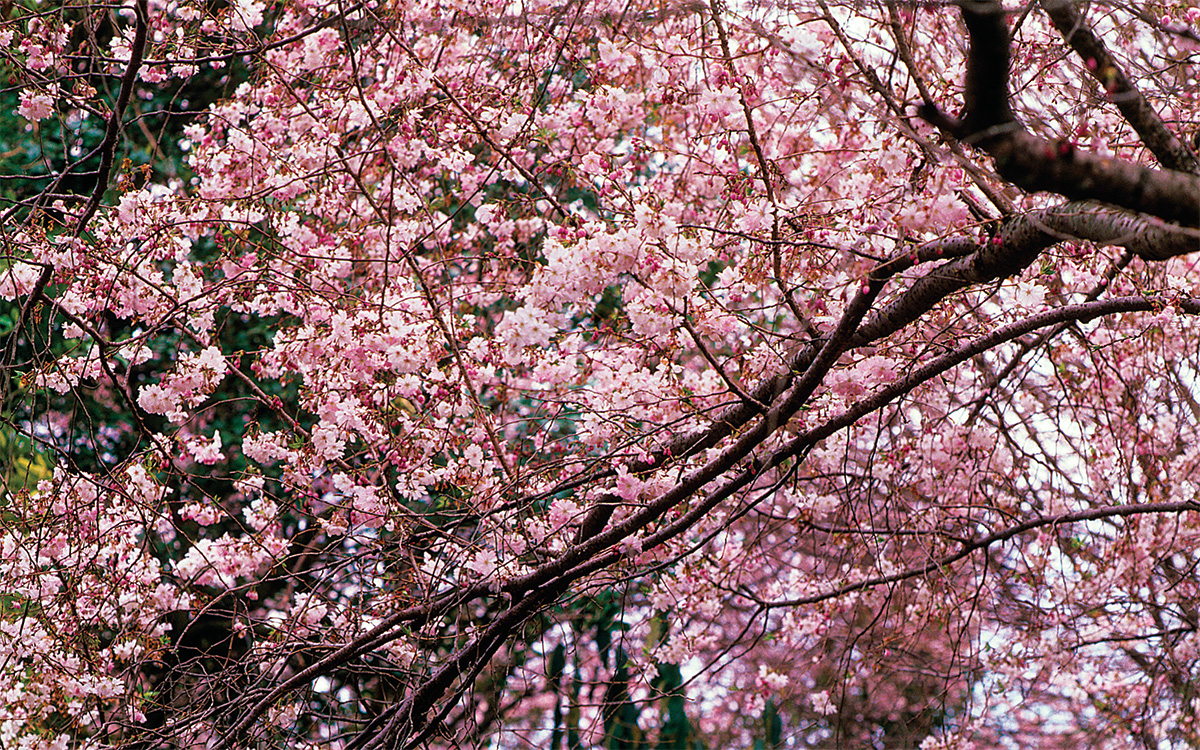
Name: Autumn Higan cherry (Prunus × subhirtella ‘Autumnalis’)
Zones: 6–8
Size: 20 to 40 feet tall and 15 to 30 feet wide
Conditions: Full sun; moist, fertile, well-drained soil
There is perhaps no other tree as recognizable for its spring flowers than the flowering Japanese cherry. It is planted by the hundreds around the Tidal Basin in Washington, D.C., and as street and ornamental trees across the country. Autumn Higan cherry is a medium-size tree with an added bonus, which other flowering cherries don’t offer: It blooms in fall. From September and into October, small, dark pink buds open into semidouble, light pink flowers that fade to a very light pink or white. The tree flowers sporadically during winter; begins again in March; and then, by April, boasts a profusion of flowers. The fall foliage of Higan cherry is notable, as well, its narrow leaves turning brilliant shades of orange, red, and yellow. Most ornamental cherry trees are grafted; therefore, be mindful of suckers that can emerge at the base of the tree, especially in spring. Remove them on an annual basis.
6. A magnolia that just won’t quit

Name: ‘March ’til Frost’ magnolia (Magnolia ‘March ’til Frost’)
Zones: 5–9
Size: 10 to 20 feet tall and wide
Conditions: Full sun to partial shade; average, well-drained soil
As its name implies, ‘March ’til Frost’ is long blooming. It will typically begin blooming in March or April, and sporadically flower until frost or well into fall. A colleague in Raleigh, North Carolina, told me that this year her ‘March ’til Frost’ started blooming in January. The flowers are a striking, tulip-shaped deep purple-pink, and they sit atop the foliage. Like other magnolias, ‘March ’til Frost’ will start flowering at a very young age. Because of the size of this magnolia, it is well suited for a small garden or courtyard or may be used as a pair to flank an entrance to a house.
7. Native witch hazel blooms before its relatives

Name: Witch hazel (Hamamelis virginiana)
Zones: 3–8
Size: 15 to 20 feet tall and wide
Conditions: Full sun to partial shade; average, well-drained soil
Hamamelis virginiana is native from Canada south to Georgia and west to Nebraska. The bark has been harvested for more than 100 years and made into a liquid astringent that has many curative qualities. In its native habitat, it grows from an understory plant to a large deciduous tree, similar to the tulip poplar (Liriodendron tulipifera, Zones 4–9) and the black gum (Nyssa sylvatica, Zones 5–9). In fall, four narrow, spidery, straplike petals emerge a bright yellow and in fragrant clusters that cover the branches. Flowering can begin as early as September or as late as December. Depending on the selection, the best forms are those that flower after the leaves have fallen and are not shrouded by the foliage. While native witch hazel grows as an understory plant in the wild, it is also perfectly happy as a large shrub or tree in full sun. It is resistant to deer.



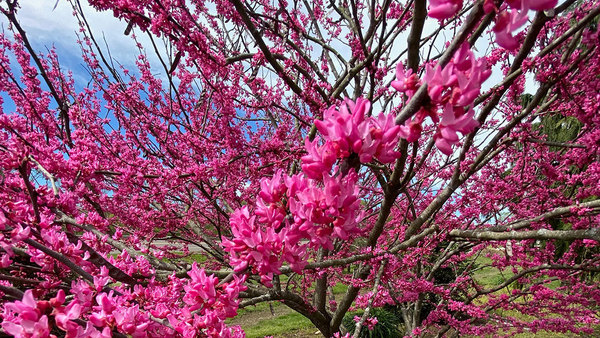
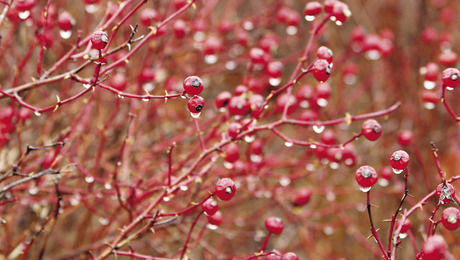












Comments
I have a poem that takes place in Florida, and I am sure I smelled magnolia blooming... thanks to your site, I think it truly was magnolia, or some very similar tree/flower.
so beautiful
fascinating
lovely one
graceful
Log in or create an account to post a comment.
Sign up Log in